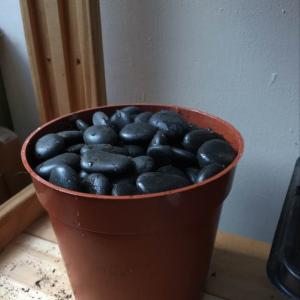成长记
riverrun
2017年10月05日
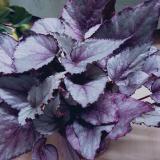
the flowers of lemon trees smell soo intense and good. i really think they should be a "bigger thing"


1
0
文章
Dummer. ゛☀
2017年09月29日

Scientific Name
Psychotria capensis (Eckl.) Vatke

Common Names
Black Bird Berry, Bird Berry, Bastard Lemonwood, Lemon Bush
Synonyms
Logania capensis (basionym), Grumilea capensis, Grumilea cymosa, Grumilea globosa, Grumilea oblanceolata, Psychotria capensis subsp. capensis, Psychotria capensis var. capensis, Psychotria eckloniana, Psychotria zambesiana, Uragoga capensis, Uragoga zambesiana
Scientific Classification
Family: Rubiaceae
Subfamily: Rubioideae
Tribe: Psychotrieae
Genus: Psychotria

Flower
Color: Golden yellow
Bloom Time: Spring to midsummer
Description
Psychotria capensis is an evergreen shrub or small tree, up to 26 feet (8 m) tall, with a slender stem, horizontal branches and pale brown bark. The leaves are shiny, light to dark green above and paler below, smooth and leathery. They are fairly large, up to 6 inches (15 cm) long, up to 2.4 inches (6 cm) wide, elliptic to obovate, opposite and often drooping. Golden yellow flowers are borne in flattish, terminal, branched heads up to 3.2 inches (8 cm) in diameter from spring to midsummer. The flowers are followed in late summer to winter by large, flat clusters of pea-sized, shiny yellow fruits ripening to red or black.
Hardiness
USDA hardiness zone 9a to 11b: from 20 °F (−6.7 °C) to 50 °F (+10 °C).

How to Grow and Care
Hot Lips grows where the soil is rich and humid from leaf litter, moist and sheltered from the most powerful sun rays by upper story trees. Interior growers turn to plants from around the world to add exotic touches to the home. Hot Lips plant fits the bill but requires a tropical environment. For this reason, it is mostly a collector’s plant for much of the United States.
Growing Hot Lips plants requires a heated greenhouse or solarium, high humidity and shelter from harsh solar rays. Growing Hot Lips plant means mimicking the understory tropical environment for which it is suited. Most potting soil will not have both the excellent drainage and moisture retentiveness necessary to raise these plants. Add a bit of vermiculite and peat moss before potting up the plant. Place it in an area with temperatures of at least 70ºF (21ºC), humidity of at least 60% and indirect bright lighting.
Origin
Native to South African south and east coasts, from Knysna through the Eastern Cape and KwaZulu-Natal.
Psychotria capensis (Eckl.) Vatke

Common Names
Black Bird Berry, Bird Berry, Bastard Lemonwood, Lemon Bush
Synonyms
Logania capensis (basionym), Grumilea capensis, Grumilea cymosa, Grumilea globosa, Grumilea oblanceolata, Psychotria capensis subsp. capensis, Psychotria capensis var. capensis, Psychotria eckloniana, Psychotria zambesiana, Uragoga capensis, Uragoga zambesiana
Scientific Classification
Family: Rubiaceae
Subfamily: Rubioideae
Tribe: Psychotrieae
Genus: Psychotria

Flower
Color: Golden yellow
Bloom Time: Spring to midsummer
Description
Psychotria capensis is an evergreen shrub or small tree, up to 26 feet (8 m) tall, with a slender stem, horizontal branches and pale brown bark. The leaves are shiny, light to dark green above and paler below, smooth and leathery. They are fairly large, up to 6 inches (15 cm) long, up to 2.4 inches (6 cm) wide, elliptic to obovate, opposite and often drooping. Golden yellow flowers are borne in flattish, terminal, branched heads up to 3.2 inches (8 cm) in diameter from spring to midsummer. The flowers are followed in late summer to winter by large, flat clusters of pea-sized, shiny yellow fruits ripening to red or black.
Hardiness
USDA hardiness zone 9a to 11b: from 20 °F (−6.7 °C) to 50 °F (+10 °C).

How to Grow and Care
Hot Lips grows where the soil is rich and humid from leaf litter, moist and sheltered from the most powerful sun rays by upper story trees. Interior growers turn to plants from around the world to add exotic touches to the home. Hot Lips plant fits the bill but requires a tropical environment. For this reason, it is mostly a collector’s plant for much of the United States.
Growing Hot Lips plants requires a heated greenhouse or solarium, high humidity and shelter from harsh solar rays. Growing Hot Lips plant means mimicking the understory tropical environment for which it is suited. Most potting soil will not have both the excellent drainage and moisture retentiveness necessary to raise these plants. Add a bit of vermiculite and peat moss before potting up the plant. Place it in an area with temperatures of at least 70ºF (21ºC), humidity of at least 60% and indirect bright lighting.
Origin
Native to South African south and east coasts, from Knysna through the Eastern Cape and KwaZulu-Natal.
0
0
文章
Dummer. ゛☀
2017年09月26日

Scientific Name
Thelymitra antennifera (Lindl.) Hook.f.

Common Names
Rabbit Eared Sun Orchid, Rabbit Ears, Rabbit’s Ears, Lemon Orchid, Lemon Scented Sun Orchid, Vanilla Orchid, Antenna Thelymitra
Synonyms
Macdonaldia antennifera
Scientific Classification
Family: Orchidaceae
Subfamily: Orchidoideae
Tribe: Diurideae
Subtribe: Thelymitrinae
Genus: Thelymitra

Flower
Color: Yellow
Bloom Time: July to October
Description
Thelymitra antennifera is a tuberous, perennial herb, up to 10 inches (25 cm) tall, with yellow flowers from July to October. Its leaf is circular in cross–section, up to 5 inches (12 cm) long, The inflorescence consists of 1 to 4 yellow flowers on a wiry, zig-zagged often pinkish stem. Each flower is up to 1.6 inches (4 cm) across, with a lemon or vanilla scent. The sepals and petals are up to 0.8 inch (2 cm) long and up to 0.25 inch (6 mm) wide, the sepals having a broad, reddish–brown band on their outer surface. The column is up to 0.25 inch (6 mm), with dark brown arms that are ear-like and held high above the column.
Hardiness
USDA hardiness zone 9b to 11b: from 25 °F (−3.9 °C) to 50 °F (+10 °C).

How to Grow and Care
Sun Orchids can be very tricky in cultivation. However, most are fairly amenable and some are very easy. All plants are summer dormant and rest as tuberoids. Plants emerge in late summer and flower in late winter, spring and early summer.
Culture as sunny as possible. In milder climates garden culture is possible. Frost hardy up to 23°F (-5°C). Regular watering during the growing period is essential. Fertilize monthly until flowering. Reduce watering with the onset of flowers and stop as the leaves die back. Completely dry during dormancy. Occasionally a light spray of water for small plants and seedlings to prevent dehydration. If grown inside, move plants temporary outside in late summer as cool nights and some rain will stimulate plants into the new growing season.
Origin
Native to western Australia, south Australia and Victoria and northern parts of Tasmania.
Thelymitra antennifera (Lindl.) Hook.f.

Common Names
Rabbit Eared Sun Orchid, Rabbit Ears, Rabbit’s Ears, Lemon Orchid, Lemon Scented Sun Orchid, Vanilla Orchid, Antenna Thelymitra
Synonyms
Macdonaldia antennifera
Scientific Classification
Family: Orchidaceae
Subfamily: Orchidoideae
Tribe: Diurideae
Subtribe: Thelymitrinae
Genus: Thelymitra

Flower
Color: Yellow
Bloom Time: July to October
Description
Thelymitra antennifera is a tuberous, perennial herb, up to 10 inches (25 cm) tall, with yellow flowers from July to October. Its leaf is circular in cross–section, up to 5 inches (12 cm) long, The inflorescence consists of 1 to 4 yellow flowers on a wiry, zig-zagged often pinkish stem. Each flower is up to 1.6 inches (4 cm) across, with a lemon or vanilla scent. The sepals and petals are up to 0.8 inch (2 cm) long and up to 0.25 inch (6 mm) wide, the sepals having a broad, reddish–brown band on their outer surface. The column is up to 0.25 inch (6 mm), with dark brown arms that are ear-like and held high above the column.
Hardiness
USDA hardiness zone 9b to 11b: from 25 °F (−3.9 °C) to 50 °F (+10 °C).

How to Grow and Care
Sun Orchids can be very tricky in cultivation. However, most are fairly amenable and some are very easy. All plants are summer dormant and rest as tuberoids. Plants emerge in late summer and flower in late winter, spring and early summer.
Culture as sunny as possible. In milder climates garden culture is possible. Frost hardy up to 23°F (-5°C). Regular watering during the growing period is essential. Fertilize monthly until flowering. Reduce watering with the onset of flowers and stop as the leaves die back. Completely dry during dormancy. Occasionally a light spray of water for small plants and seedlings to prevent dehydration. If grown inside, move plants temporary outside in late summer as cool nights and some rain will stimulate plants into the new growing season.
Origin
Native to western Australia, south Australia and Victoria and northern parts of Tasmania.
0
0
文章
Dummer. ゛☀
2017年09月14日

Ick. I hate spider mites. They are a plague, particularly on the container gardens that I try to overwinter inside. I have had them infest several fruit trees, including, Meyer lemon, lime, kumquat and orange. It could be that all these trees became infested because of their close proximity to each other. However, once one plant gets spider mites they can infest all of your plants pretty quickly.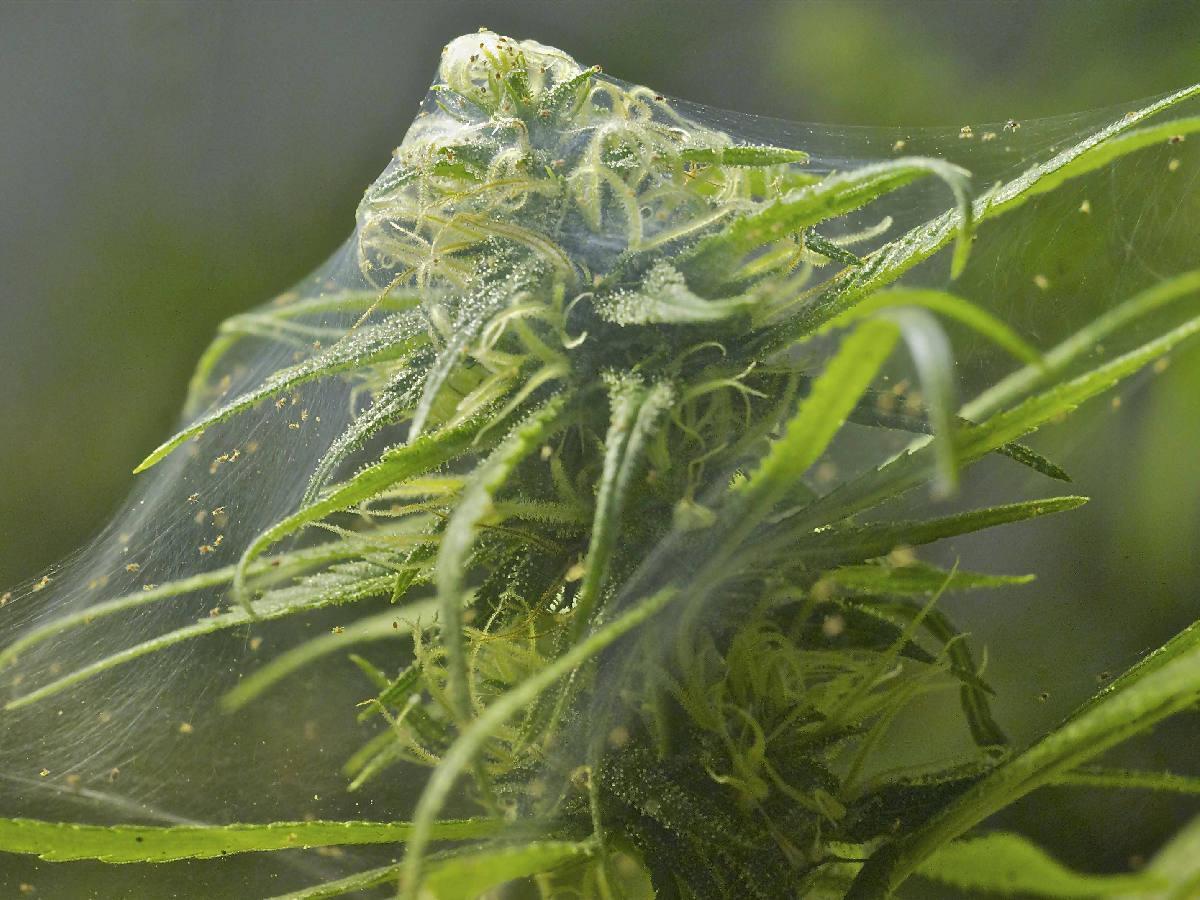
Unfortunately, it's very hard to get rid of spider mites and sometimes, you just have to pitch plants that get them.
Be careful, if you do have to get rid of plants that are infested, do not compost them. Sadly the best way to get rid of them is to either throw them way out in the woods, or put them in plastic bags and put them in the garbage.
Identifying a Spider Mite Infestation - Spider mites are tiny - smaller than the head of a pin - so it's hard to see them. To identify an infestation, you can check to see if there is webbing on your plants particularly at the intersection of branches. Another, sign, after the spider mites have infested a plant, is to see leaves that are spotted or speckled looking. Spider mights can range in color from red to light brown, yellow to green.
Getting Rid of Spider Mites - Like most plant pests, you a have much better chance dealing with spider mites before you have an all out infestation. The more mites, the more eggs and the harder it is to control them. My first line of defense, with almost any insect problem in my containers (though spider mites aren't actually classified as an insect, but as an arachnid), is to spray them with a hose, trying to knock as many insects off as possible--making sure to spray the underside of the leaves as well as the tops. Once the plant is dry, I try an insecticidal soap spray. With large plants, it's hard to get good coverage all over the entire plant, including the undersides of leaves, but do the best you can. I like to use insecticidal soap instead of a pesticide because it doesn't harm beneficial insects and is listed as ok for organic gardening. After insecticidal soap, I try neem oil or a neem oil combination. A disadvantage of neem oil is some people don't like the smell and it can be sticky and get on walls and furniture. Another thing to try is a pyrethrin insecticide, which is somewhat more toxic than the neem oil and insecticidal soap, but is still considered "natural" pesticide because it is made from chrysanthemums.
Be Persistent - Chances are you will have to keep spraying your spider mite infested plant every seven to ten days in order to interrupt the cycle of eggs hatching. Also, make sure to spray the soil as well as the entire plant.
When to Give Up - To be honest, there is no absolute answer to this unless your plant is completely dead--even then, plants can surprise you and bounce back. I have battled spider mites through the winter and then have taken plants that looked like they were at death's door, cut them back severely in the spring, and then put them outside. Some of the plants rebounded gorgeously, thriving throughout the summer. However, on bringing them back inside, the mites returned with a vengeance. But I have a hard time giving up on beloved plants, so I tend to keep them limping along, way past when it is practical.
How to Prevent Spider Mites from Attacking Your Plants - Prevention is always the preferred option when it comes to mites. Before you buy a plant, look for the tell-tale signs of spotted leaves or webbing. If you see any indication of mites, don't buy the plant or any plants nearby. Also, mites like dry and dusty conditions, so keep your plants hydrated and healthy, and a level of humidity in the air, so the conditions will be inhospitable to mites.

Unfortunately, it's very hard to get rid of spider mites and sometimes, you just have to pitch plants that get them.
Be careful, if you do have to get rid of plants that are infested, do not compost them. Sadly the best way to get rid of them is to either throw them way out in the woods, or put them in plastic bags and put them in the garbage.
Identifying a Spider Mite Infestation - Spider mites are tiny - smaller than the head of a pin - so it's hard to see them. To identify an infestation, you can check to see if there is webbing on your plants particularly at the intersection of branches. Another, sign, after the spider mites have infested a plant, is to see leaves that are spotted or speckled looking. Spider mights can range in color from red to light brown, yellow to green.

Getting Rid of Spider Mites - Like most plant pests, you a have much better chance dealing with spider mites before you have an all out infestation. The more mites, the more eggs and the harder it is to control them. My first line of defense, with almost any insect problem in my containers (though spider mites aren't actually classified as an insect, but as an arachnid), is to spray them with a hose, trying to knock as many insects off as possible--making sure to spray the underside of the leaves as well as the tops. Once the plant is dry, I try an insecticidal soap spray. With large plants, it's hard to get good coverage all over the entire plant, including the undersides of leaves, but do the best you can. I like to use insecticidal soap instead of a pesticide because it doesn't harm beneficial insects and is listed as ok for organic gardening. After insecticidal soap, I try neem oil or a neem oil combination. A disadvantage of neem oil is some people don't like the smell and it can be sticky and get on walls and furniture. Another thing to try is a pyrethrin insecticide, which is somewhat more toxic than the neem oil and insecticidal soap, but is still considered "natural" pesticide because it is made from chrysanthemums.

Be Persistent - Chances are you will have to keep spraying your spider mite infested plant every seven to ten days in order to interrupt the cycle of eggs hatching. Also, make sure to spray the soil as well as the entire plant.
When to Give Up - To be honest, there is no absolute answer to this unless your plant is completely dead--even then, plants can surprise you and bounce back. I have battled spider mites through the winter and then have taken plants that looked like they were at death's door, cut them back severely in the spring, and then put them outside. Some of the plants rebounded gorgeously, thriving throughout the summer. However, on bringing them back inside, the mites returned with a vengeance. But I have a hard time giving up on beloved plants, so I tend to keep them limping along, way past when it is practical.

How to Prevent Spider Mites from Attacking Your Plants - Prevention is always the preferred option when it comes to mites. Before you buy a plant, look for the tell-tale signs of spotted leaves or webbing. If you see any indication of mites, don't buy the plant or any plants nearby. Also, mites like dry and dusty conditions, so keep your plants hydrated and healthy, and a level of humidity in the air, so the conditions will be inhospitable to mites.
0
0
文章
Dummer. ゛☀
2017年08月30日

The lemon cypress tree, also called Goldcrest after its cultivar, is a variety of Monterey cypress. It gets its common name from the powerful strong lemon scent that its branches exude if you brush against them or crush their foliage. You can start growing lemon cypress trees (Cupressus macrocarpa ‘Goldcrest’) indoors or outside. Lemon cypress care is not difficult if you know some basic rules.
Lemon Cypress Trees
Lemon cypress trees come in two sizes: small and smaller. Grown outdoors in their natural habitat, the trees can grow to 16 feet tall. This is quite small for a cypress.
The dwarf lemon cypress (Cupressus macrocarpa ‘Goldcrest Wilma’) is the better choice for a houseplant. This small tree usually does not grow taller than 3 feet, making it perfect for indoor containers. The tree has many admirers, thanks to its green-yellow needle-like foliage, conical growth pattern and bright fresh citrus smell. If you are thinking of growing lemon cypress, you’ll need to understand basic rules of lemon cypress care.
Lemon Cypress Care Outdoors
In general, growing lemon cypress is not difficult. The trees require well-draining soil, but are not picky about whether it is loamy, sandy or chalky. They also accept acidic, neutral or alkaline soil. If you are growing lemon cypress in your backyard, you’ll need to learn about care for lemon cypress outdoors. They thrive in U.S. Department of Agriculture plant hardiness zones 7 through 10. Lemon cypress trees cannot survive shade, so you’ll need to plant your outdoor tree in a sunny spot. And don’t neglect irrigation, especially immediately after planting. During the tree’s first growing season, you’ll need to water twice a week. Watering is always an important part of care for lemon cypress outdoors. After the first year, water whenever the soil is dry. In spring, it’s time to feed the tree. Apply a standard, slow-release 20-20-20 fertilizer before new growth appears in the spring.
Lemon Cypress Houseplant Care
If you decide to start growing lemon cypress trees indoors as houseplants, remember that they do best with cool indoor temperatures. Keep your thermostat in the low 60’s during winter. Perhaps the most difficult part of lemon cypress houseplant care is ensuring sufficient light. Select a window that provides good sunlight and turn the container regularly to give each side a turn. The houseplant requires 6 to 8 hours of direct sun.
Don’t forget water – essential for lemon cypress houseplant care. They won’t forgive you if you don’t give them drenching once a week – you’ll see brown needles appear. Water whenever the soil is dry.

Lemon Cypress Trees
Lemon cypress trees come in two sizes: small and smaller. Grown outdoors in their natural habitat, the trees can grow to 16 feet tall. This is quite small for a cypress.
The dwarf lemon cypress (Cupressus macrocarpa ‘Goldcrest Wilma’) is the better choice for a houseplant. This small tree usually does not grow taller than 3 feet, making it perfect for indoor containers. The tree has many admirers, thanks to its green-yellow needle-like foliage, conical growth pattern and bright fresh citrus smell. If you are thinking of growing lemon cypress, you’ll need to understand basic rules of lemon cypress care.

Lemon Cypress Care Outdoors
In general, growing lemon cypress is not difficult. The trees require well-draining soil, but are not picky about whether it is loamy, sandy or chalky. They also accept acidic, neutral or alkaline soil. If you are growing lemon cypress in your backyard, you’ll need to learn about care for lemon cypress outdoors. They thrive in U.S. Department of Agriculture plant hardiness zones 7 through 10. Lemon cypress trees cannot survive shade, so you’ll need to plant your outdoor tree in a sunny spot. And don’t neglect irrigation, especially immediately after planting. During the tree’s first growing season, you’ll need to water twice a week. Watering is always an important part of care for lemon cypress outdoors. After the first year, water whenever the soil is dry. In spring, it’s time to feed the tree. Apply a standard, slow-release 20-20-20 fertilizer before new growth appears in the spring.

Lemon Cypress Houseplant Care
If you decide to start growing lemon cypress trees indoors as houseplants, remember that they do best with cool indoor temperatures. Keep your thermostat in the low 60’s during winter. Perhaps the most difficult part of lemon cypress houseplant care is ensuring sufficient light. Select a window that provides good sunlight and turn the container regularly to give each side a turn. The houseplant requires 6 to 8 hours of direct sun.

Don’t forget water – essential for lemon cypress houseplant care. They won’t forgive you if you don’t give them drenching once a week – you’ll see brown needles appear. Water whenever the soil is dry.
1
1
Esparco:Have
文章
Dummer. ゛☀
2017年08月25日

Lemongrass, as the name suggests, is a grass-like herb whose tender shoots and leaves are used to impart a delicate hint of lemon in many Asian dishes. If you love the subtle citrus flavor of this herb, you may have wondered “can I propagate lemongrass?” In fact, propagating lemongrass by division is a simple process. Read on to find out how to divide lemongrass plants.
How Can I Propagate Lemongrass?
Lemongrass (Cymbopogon citratus), sometimes spelled lemon grass, is indeed a member of the grass family that includes corn and wheat. It is winter hardy to only USDA zone 10, but can be container grown and brought indoors to shelter it from winter temperatures.
There are only two of the 55 species of Cymbopogon used as lemongrass. They are usually labeled as East or West Indian lemongrass and are used in cooking or to make tea or tisanes. Lemongrass is generally grown from stem cuttings or divisions, with the division of lemongrass being the most commonly used method.
Propagating Lemongrass by Division
As mentioned, division of lemongrass is the primary method of propagation. Lemongrass can be obtained from specialty nurseries or can be purchased from an Asian grocery. Sometimes, you may find it in the local supermarket or obtain a cutting from a friend. If you get it from a grocer, try to find a piece with a few roots in evidence. Put the lemongrass in a glass of water and let the roots grow. When the lemongrass has sufficient roots, go ahead and plant it in a container or garden area with well-draining soil that is moist and high in organic content, and in a full sun exposure. If need be, amend the soil with 2-4 inches of rich compost and work it in down to a depth of 4-6 inches. Lemongrass grows quickly and by the successive year will likely need to be divided. Potted plants, especially, will need to be divided each year.
How to Divide Lemongrass Plants
When dividing lemongrass plants, be sure they have at least one inch of root attached. Optimally, cut the blades to a height of two inches before dividing lemongrass plants, which will make managing the plant easier. Dig up the lemongrass plant and, with a shovel or sharp knife, divide the plant into at least 6-inch sections. Plant these divisions 3 feet apart to accommodate the vigorous growth; plants can grow 3-6 feet tall and 3 feet across. Lemongrass is native to tropical regions and thrives with ample rainfall and humid conditions, so keep the plants moist. Water by hand or use flood irrigation, not sprinklers. Fertilize the plants every two weeks during the growing season (June through September) with a complete balanced fertilizer. Cease fertilizing during the winter when the plant goes dormant.

How Can I Propagate Lemongrass?
Lemongrass (Cymbopogon citratus), sometimes spelled lemon grass, is indeed a member of the grass family that includes corn and wheat. It is winter hardy to only USDA zone 10, but can be container grown and brought indoors to shelter it from winter temperatures.
There are only two of the 55 species of Cymbopogon used as lemongrass. They are usually labeled as East or West Indian lemongrass and are used in cooking or to make tea or tisanes. Lemongrass is generally grown from stem cuttings or divisions, with the division of lemongrass being the most commonly used method.

Propagating Lemongrass by Division
As mentioned, division of lemongrass is the primary method of propagation. Lemongrass can be obtained from specialty nurseries or can be purchased from an Asian grocery. Sometimes, you may find it in the local supermarket or obtain a cutting from a friend. If you get it from a grocer, try to find a piece with a few roots in evidence. Put the lemongrass in a glass of water and let the roots grow. When the lemongrass has sufficient roots, go ahead and plant it in a container or garden area with well-draining soil that is moist and high in organic content, and in a full sun exposure. If need be, amend the soil with 2-4 inches of rich compost and work it in down to a depth of 4-6 inches. Lemongrass grows quickly and by the successive year will likely need to be divided. Potted plants, especially, will need to be divided each year.

How to Divide Lemongrass Plants
When dividing lemongrass plants, be sure they have at least one inch of root attached. Optimally, cut the blades to a height of two inches before dividing lemongrass plants, which will make managing the plant easier. Dig up the lemongrass plant and, with a shovel or sharp knife, divide the plant into at least 6-inch sections. Plant these divisions 3 feet apart to accommodate the vigorous growth; plants can grow 3-6 feet tall and 3 feet across. Lemongrass is native to tropical regions and thrives with ample rainfall and humid conditions, so keep the plants moist. Water by hand or use flood irrigation, not sprinklers. Fertilize the plants every two weeks during the growing season (June through September) with a complete balanced fertilizer. Cease fertilizing during the winter when the plant goes dormant.
0
0
文章
Dummer. ゛☀
2017年08月25日

Lemon balm is easy to grow and provides a pleasant, lemony flavor and aroma for hot dishes, tea or cold drinks. It’s hard to imagine that such a lovely plant could cause so many problems, but this member of the mint family is super-prolific and can wear out its welcome in a hurry.
How to Prevent Lemon Balm Weeds
A weed is defined as any plant that grows where you don’t want it, and lemon balm proves the point. This dainty little plant that looks so innocent when you buy it at the garden center can reach a height of 2 feet and a spread of 3 feet by the end of the first growing season. Worse yet, the plant self-seeds itself like a champ and before you know it, you have a garden full of more lemon balm than you ever wanted — or needed. The most effective way to keep lemon balm in bounds is to prevent the plant from going to seed. One way to accomplish this is to shear the plant two or three times every year so it doesn’t bloom. Don’t worry; cutting the plant back won’t hurt it. If the plant blooms, snip off the flowers before they have a chance to go to seed. Even one bloom can contain a tremendous number of seeds.
Getting Rid of Lemon Balm
If the plant has already gone to seed and taken over your garden, removing the plant by hand is usually the best recourse. Be sure the ground is slightly damp so you can pull entire plants, along with the roots and runners (stolons). If you leave roots or stolons in the ground, the plants will return with a vengeance. You may want to loosen the soil with a garden fork to make weeding easier if the ground is hard. One weeding may not be enough for complete lemon balm control. Keep an eye on problem areas and pull the small shoots as soon as they appear. Controlling lemon balm plants requires persistence.

How to Prevent Lemon Balm Weeds
A weed is defined as any plant that grows where you don’t want it, and lemon balm proves the point. This dainty little plant that looks so innocent when you buy it at the garden center can reach a height of 2 feet and a spread of 3 feet by the end of the first growing season. Worse yet, the plant self-seeds itself like a champ and before you know it, you have a garden full of more lemon balm than you ever wanted — or needed. The most effective way to keep lemon balm in bounds is to prevent the plant from going to seed. One way to accomplish this is to shear the plant two or three times every year so it doesn’t bloom. Don’t worry; cutting the plant back won’t hurt it. If the plant blooms, snip off the flowers before they have a chance to go to seed. Even one bloom can contain a tremendous number of seeds.

Getting Rid of Lemon Balm
If the plant has already gone to seed and taken over your garden, removing the plant by hand is usually the best recourse. Be sure the ground is slightly damp so you can pull entire plants, along with the roots and runners (stolons). If you leave roots or stolons in the ground, the plants will return with a vengeance. You may want to loosen the soil with a garden fork to make weeding easier if the ground is hard. One weeding may not be enough for complete lemon balm control. Keep an eye on problem areas and pull the small shoots as soon as they appear. Controlling lemon balm plants requires persistence.
0
0
文章
Dummer. ゛☀
2017年08月25日

Lemon balm (Melissa officinalis) is a rambunctious plant with attractive, heart-shaped leaves and a delicate lemony aroma. A member of the mint family, lemon balm is easy to grow, even for newbie gardeners. If you’re wondering what to plant with lemon balm, read on for a few suggestions to get you started.
Lemon Balm Companion Planting
Lemon balm companion planting is a real boon in the garden, as this perennial herb attracts bees and other beneficial pollinators, while the strong, citrusy odor deters several unwelcome pests, including gnats and mosquitoes. Some gardeners even claim that lemon balm helps keep weeds in check. Finding companion plants for lemon balm is easy, because there are really no bad lemon balm companions! However, companions for lemon balm should be plants that thrive in the same growing conditions – rich, moist, well-drained soil and full sun or light shade.
What to Plant with Lemon Balm
Most herbs, fruits and vegetables make great lemon balm companions, including the following:
Winter and summer squash
Melons
Tomatoes
All members of the cabbage family (kale, broccoli, Brussels sprouts, cauliflower, etc.)
Apples
Kiwi
Onions
Fennel
Basil
Rosemary
Sage

Nearly any blooming plant pairs well with lemon balm, but if you’re hoping to attract pollinators, good lemon balm companions include other nectar-rich plants such as:
Cosmos
Zinnias
Lupine
Poppies
Allium
Four o’clock
Rudbeckia
Echinacea
Sweet peas
Bee balm
Chamomile
Hyssop
Borage

If your goal is to deter pests, worthy companions for lemon balm are:
Marigolds
Geraniums
Daisies
Asters
Sunflowers
Nasturtiums
Petunias
Lavender
Dill
Mint
Chives
Parsley

Lemon Balm Companion Planting
Lemon balm companion planting is a real boon in the garden, as this perennial herb attracts bees and other beneficial pollinators, while the strong, citrusy odor deters several unwelcome pests, including gnats and mosquitoes. Some gardeners even claim that lemon balm helps keep weeds in check. Finding companion plants for lemon balm is easy, because there are really no bad lemon balm companions! However, companions for lemon balm should be plants that thrive in the same growing conditions – rich, moist, well-drained soil and full sun or light shade.

What to Plant with Lemon Balm
Most herbs, fruits and vegetables make great lemon balm companions, including the following:
Winter and summer squash
Melons
Tomatoes
All members of the cabbage family (kale, broccoli, Brussels sprouts, cauliflower, etc.)
Apples
Kiwi
Onions
Fennel
Basil
Rosemary
Sage

Nearly any blooming plant pairs well with lemon balm, but if you’re hoping to attract pollinators, good lemon balm companions include other nectar-rich plants such as:
Cosmos
Zinnias
Lupine
Poppies
Allium
Four o’clock
Rudbeckia
Echinacea
Sweet peas
Bee balm
Chamomile
Hyssop
Borage

If your goal is to deter pests, worthy companions for lemon balm are:
Marigolds
Geraniums
Daisies
Asters
Sunflowers
Nasturtiums
Petunias
Lavender
Dill
Mint
Chives
Parsley
0
0
文章
Dummer. ゛☀
2017年08月25日

Lemon balm plants tend to be pass-along plants that a gardener ends up with from plant swaps or as gifts from other gardeners. This can leave a gardener wondering what to do with lemon balm and what is lemon balm used for exactly. While not as popular as other herbs, lemon balm is nevertheless a wonderful herb to have in your garden. Keep reading to learn more about how to grow lemon balm.
What is Lemon Balm?
The lemon balm plant (Melissa officinalis) is actually a member of the mint family and is a perennial herb. It grows as a bushy, leafy herb with a pleasant lemon smell and small white flowers. If not carefully controlled, lemon balm can quickly become invasive in the garden. Often, people mistakenly think that lemon balm is invasive due to its roots, like its cousins peppermint and spearmint, but in fact it is the seeds of the lemon balm plant that cause this herb to suddenly take over a garden. Removing the flowers of the plant as soon as they appear will make your lemon balm far less invasive.
How to Grow Lemon Balm Plants
Growing lemon balm is very easy. The plants aren’t picky about where they grow and will grow in almost any soil, but they prefer rich, well drained soil. Lemon balm plants will grow in part shade to full sun, but flourish best in full sun. It isn’t recommended that you fertilize lemon balm, as this can cause the strength of its scent to be reduced. Lemon balm is easily propagated from seeds, cuttings or plant divisions.
What is Lemon Balm Used For?
Once established, lemon balm can produce large amounts of its sweet, lemon smelling leaves. These leaves can be used for a variety of things. Most commonly, lemon balm leaves are used in teas and potpourris. You can also use lemon balm in cooking, in making essential oils and as an insect repellent.

What is Lemon Balm?
The lemon balm plant (Melissa officinalis) is actually a member of the mint family and is a perennial herb. It grows as a bushy, leafy herb with a pleasant lemon smell and small white flowers. If not carefully controlled, lemon balm can quickly become invasive in the garden. Often, people mistakenly think that lemon balm is invasive due to its roots, like its cousins peppermint and spearmint, but in fact it is the seeds of the lemon balm plant that cause this herb to suddenly take over a garden. Removing the flowers of the plant as soon as they appear will make your lemon balm far less invasive.

How to Grow Lemon Balm Plants
Growing lemon balm is very easy. The plants aren’t picky about where they grow and will grow in almost any soil, but they prefer rich, well drained soil. Lemon balm plants will grow in part shade to full sun, but flourish best in full sun. It isn’t recommended that you fertilize lemon balm, as this can cause the strength of its scent to be reduced. Lemon balm is easily propagated from seeds, cuttings or plant divisions.

What is Lemon Balm Used For?
Once established, lemon balm can produce large amounts of its sweet, lemon smelling leaves. These leaves can be used for a variety of things. Most commonly, lemon balm leaves are used in teas and potpourris. You can also use lemon balm in cooking, in making essential oils and as an insect repellent.
1
0
文章
Dummer. ゛☀
2017年08月24日

Growing lemon thyme plants (Thymus x citriodus) are a lovely addition to an herb garden, rock garden or border or as container plants. A popular herb grown not only for its culinary uses but for its attractive foliage, lemon thyme plants can be planted to form a ground cover or among pavers along a path or patio. The tiny flowers are a bee attractor, aiding in the pollination of surrounding plants.
How to Grow Lemon Thyme Plants
Growing lemon thyme plants appear as a low growing evergreen shrub with small lemon scented foliage. They are an easy plant to grow with endless gastronomic uses in any dish requiring citrus and savory notes.
How to grow lemon thyme is pretty straightforward. This little Thymus variety will flourish in USDA plant hardiness zones 5 through 9, remaining an evergreen in zones 8 and 9. Plant lemon thyme plants in the spring in a full sun setting and space them 12 inches apart. These herbs enjoy well-drained soil and minimal irrigation.
Lemon Thyme Care
Attaining a height of 12 to 15 inches, this herb is extremely tolerant of poor soil and drought conditions. It is also resistant to deer and has no major insect or disease issues. So, lemon thyme care is as simple as planting in full sun and avoiding over watering or sitting in drenched soil, as it is prone to root rot. A hybrid thyme (T.vulgaris x T. pulegioides), lemon thyme is an erect woody based plant with a spreading habitat and thus, may need to be cut back in order to control the spread or remove unsightly woody stems. Lemon thyme plants will thrive when pruned and can even be trimmed into tiny hedges.
Harvesting Lemon Thyme
The strong lemon aroma of lemon thyme plants is at its apex just before the flowering of its tiny purple blooms. Lemon thyme’s flavor is at its peak, just as that of all herbs, in the morning when the essential oils of the plant are most abundant. Therefore, harvesting lemon thyme is best during the early morning hours of the day to reap maximum flavor. That said, any time you trim back or prune lemon thyme is a good time to use these aromatic leaves. The oils of lemon thyme plants also make an excellent mosquito repellent when crushed; useful when outside in the evening puttering in the garden. Lemon thyme is best used fresh. Chop lemon thyme leaves just before use and add at the very end of the cooking process before they lose flavor and color. Lemon thyme may be added to poultry, seafood, vegetable, marinades, stews, soups, sauces and stuffing while fresh sprigs of this herb make a lovely garnish. A beautiful varietal, golden lemon thyme adds a nice touch in the garden with its yellow-gold variegated foliage although it has a less intense lemon scent than its green counterpart.

How to Grow Lemon Thyme Plants
Growing lemon thyme plants appear as a low growing evergreen shrub with small lemon scented foliage. They are an easy plant to grow with endless gastronomic uses in any dish requiring citrus and savory notes.
How to grow lemon thyme is pretty straightforward. This little Thymus variety will flourish in USDA plant hardiness zones 5 through 9, remaining an evergreen in zones 8 and 9. Plant lemon thyme plants in the spring in a full sun setting and space them 12 inches apart. These herbs enjoy well-drained soil and minimal irrigation.

Lemon Thyme Care
Attaining a height of 12 to 15 inches, this herb is extremely tolerant of poor soil and drought conditions. It is also resistant to deer and has no major insect or disease issues. So, lemon thyme care is as simple as planting in full sun and avoiding over watering or sitting in drenched soil, as it is prone to root rot. A hybrid thyme (T.vulgaris x T. pulegioides), lemon thyme is an erect woody based plant with a spreading habitat and thus, may need to be cut back in order to control the spread or remove unsightly woody stems. Lemon thyme plants will thrive when pruned and can even be trimmed into tiny hedges.

Harvesting Lemon Thyme
The strong lemon aroma of lemon thyme plants is at its apex just before the flowering of its tiny purple blooms. Lemon thyme’s flavor is at its peak, just as that of all herbs, in the morning when the essential oils of the plant are most abundant. Therefore, harvesting lemon thyme is best during the early morning hours of the day to reap maximum flavor. That said, any time you trim back or prune lemon thyme is a good time to use these aromatic leaves. The oils of lemon thyme plants also make an excellent mosquito repellent when crushed; useful when outside in the evening puttering in the garden. Lemon thyme is best used fresh. Chop lemon thyme leaves just before use and add at the very end of the cooking process before they lose flavor and color. Lemon thyme may be added to poultry, seafood, vegetable, marinades, stews, soups, sauces and stuffing while fresh sprigs of this herb make a lovely garnish. A beautiful varietal, golden lemon thyme adds a nice touch in the garden with its yellow-gold variegated foliage although it has a less intense lemon scent than its green counterpart.
0
0
文章
Dummer. ゛☀
2017年08月24日

The lemon verbena plant (Aloysia citrodora) is native to the countries of Chile and Argentina. The lemon verbena herb is an aromatic shrub, its leaves holding their fragrance even after being dried for years. The lemon verbena plant has a fragrant, lemony smell, small white flowers and narrow leaves. Read on to learn more about growing lemon verbena.
How Do I Grow Lemon Verbena?
Growing lemon verbena isn’t too difficult. The lemon verbena herb is a sensitive one, preferring warmth to cold and having a high water requirement. Lemon verbena seeds or cuttings are used when you want to generate a new plant. In other words, you can propagate the plant or grow it fresh from the seeds.
The cuttings of lemon verbena plants can be placed in a jar of water while you wait for new roots to form. Once they form, wait a few weeks for a good root structure to exist before planting the plant into soil. Once you see some good roots, you can plant it in a container with normal potting soil or outdoors if you live in a warm climate. As far as growing lemon verbena from seed, you can start them in your normal starting planters. Just remember that both the seeds and the cuttings need plenty of sunshine to form a good plant. Once you see the seedlings and they have grown several leaves, you can transplant the seedlings into normal sized pots.
Some Lemon Verbena Uses
Some of the most common lemon verbena uses include putting the leaves and flowers in teas and to flavor alcoholic beverages. You can use the lemon verbena herbs in desserts and jams. It is also wonderful in a good fruit salad. The lemon verbena plant is sometimes used in making perfumes. There are toilet waters and colognes that include the herb in their ingredients. Medicinally, the flowers and leaves of the lemon verbena herb have been used to help with certain medical conditions. Lemon verbena uses include using it medicinally as an antipyretic (fever reducer), sedative, stomachic and antispasmodic.
So now you know that growing lemon verbena is not that difficult and requires very little work. You also know that lemon verbena uses include human consumption both medicinally and as an herb, and that it is safe for human consumption. Lemon verbena plants are very versatile, so when you include it in an herb garden, know that you have included a very useful plant indeed.

How Do I Grow Lemon Verbena?
Growing lemon verbena isn’t too difficult. The lemon verbena herb is a sensitive one, preferring warmth to cold and having a high water requirement. Lemon verbena seeds or cuttings are used when you want to generate a new plant. In other words, you can propagate the plant or grow it fresh from the seeds.
The cuttings of lemon verbena plants can be placed in a jar of water while you wait for new roots to form. Once they form, wait a few weeks for a good root structure to exist before planting the plant into soil. Once you see some good roots, you can plant it in a container with normal potting soil or outdoors if you live in a warm climate. As far as growing lemon verbena from seed, you can start them in your normal starting planters. Just remember that both the seeds and the cuttings need plenty of sunshine to form a good plant. Once you see the seedlings and they have grown several leaves, you can transplant the seedlings into normal sized pots.

Some Lemon Verbena Uses
Some of the most common lemon verbena uses include putting the leaves and flowers in teas and to flavor alcoholic beverages. You can use the lemon verbena herbs in desserts and jams. It is also wonderful in a good fruit salad. The lemon verbena plant is sometimes used in making perfumes. There are toilet waters and colognes that include the herb in their ingredients. Medicinally, the flowers and leaves of the lemon verbena herb have been used to help with certain medical conditions. Lemon verbena uses include using it medicinally as an antipyretic (fever reducer), sedative, stomachic and antispasmodic.

So now you know that growing lemon verbena is not that difficult and requires very little work. You also know that lemon verbena uses include human consumption both medicinally and as an herb, and that it is safe for human consumption. Lemon verbena plants are very versatile, so when you include it in an herb garden, know that you have included a very useful plant indeed.
0
0
成长记
Laura Horak
2017年08月23日

Brand new Eureka Dwarf Lemon Tree (3 yr from Four Winds Growers) was left unwatered for 2 weeks by my plant sitter and I'm DEVASTATED. The top leaves dried up and I pruned it but not sure what else to do... Live in SF with decent sun exposure.
Help! 🙏🏼
#Citrusmitis #Citrusmeyeri #lemon
Pictures:
1. current state: pruned & 1,000 ml water
2. post-plant sitter: minus 2 wks water
3. original condition: prior to leaving
@GFinger
How do I revive it?
How much water should I give it & how often?
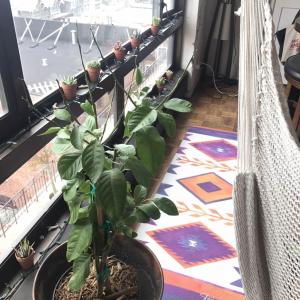
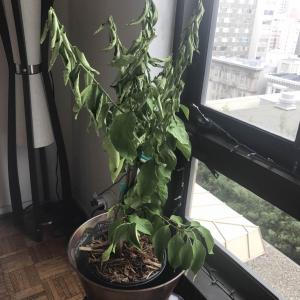
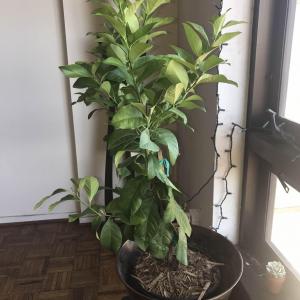
Help! 🙏🏼
#Citrusmitis #Citrusmeyeri #lemon
Pictures:
1. current state: pruned & 1,000 ml water
2. post-plant sitter: minus 2 wks water
3. original condition: prior to leaving
@GFinger
How do I revive it?
How much water should I give it & how often?



0
0
求助
Laura Horak
2017年08月23日

Brand new Eureka Dwarf Lemon Tree (3 yr from Four Winds Growers) was left unwatered for 2 weeks by my plant sitter and I'm DEVASTATED. The top leaves dried up and I pruned it but not sure what else to do... Live in SF with decent sun exposure.
Help! 🙏🏼
#Citrusmitis #Citrusmeyeri #lemon
Pictures:
1. current state: pruned & 1,000 ml water
2. post-plant sitter: minus 2 wks water
3. original condition: prior to leaving
How do I revive it?
How much water should I give it & how often?
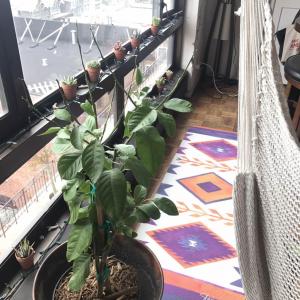
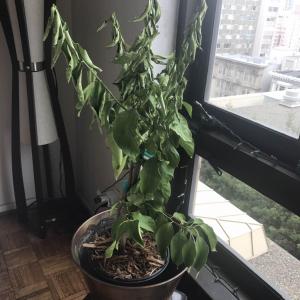
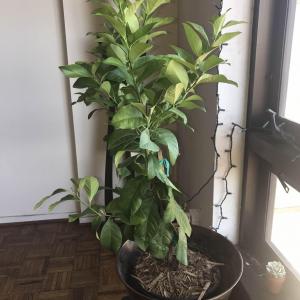
Help! 🙏🏼
#Citrusmitis #Citrusmeyeri #lemon
Pictures:
1. current state: pruned & 1,000 ml water
2. post-plant sitter: minus 2 wks water
3. original condition: prior to leaving
How do I revive it?
How much water should I give it & how often?



0
0





